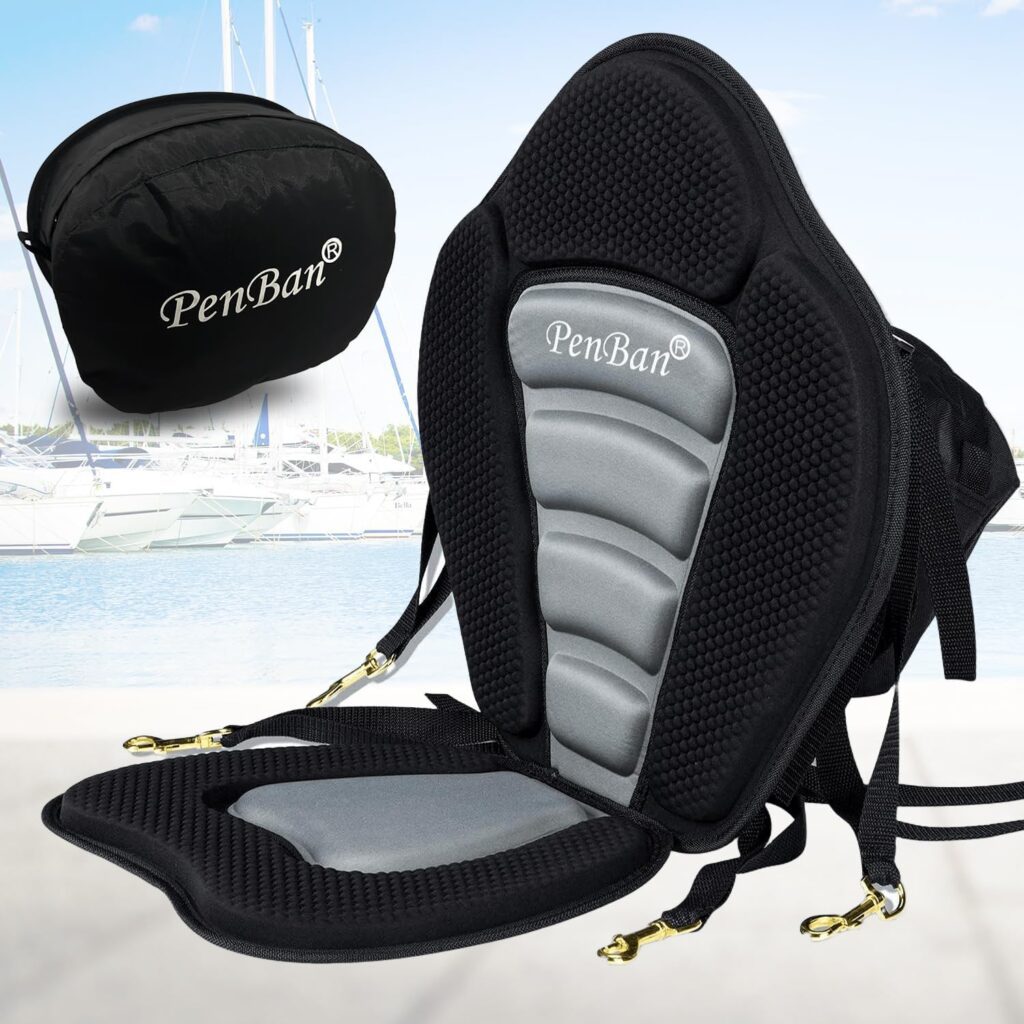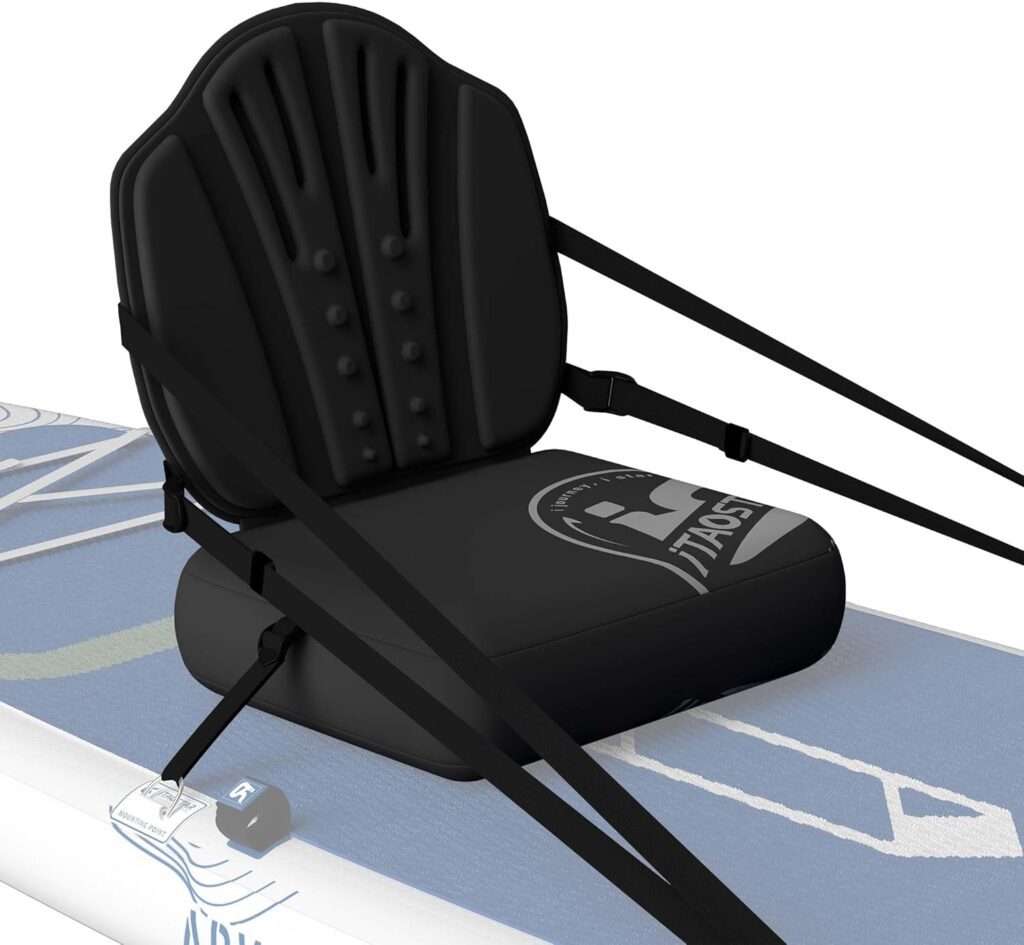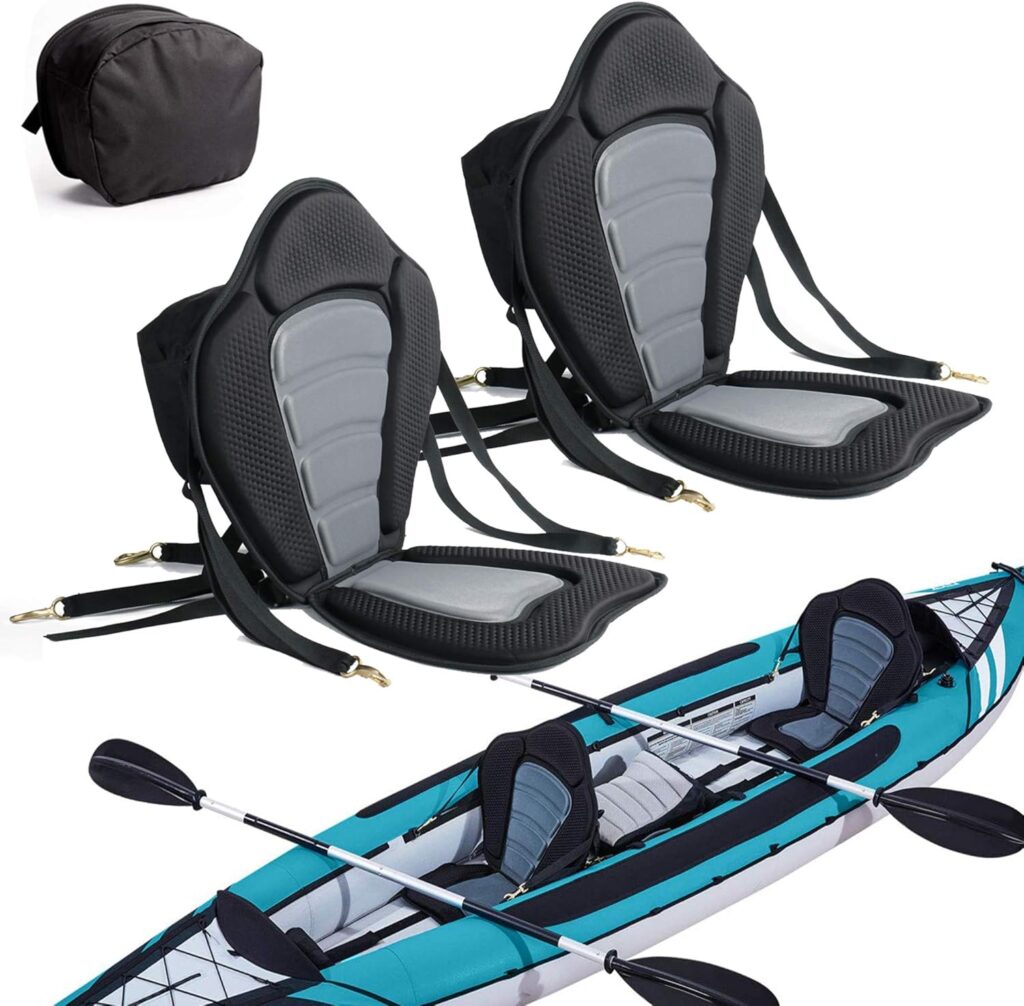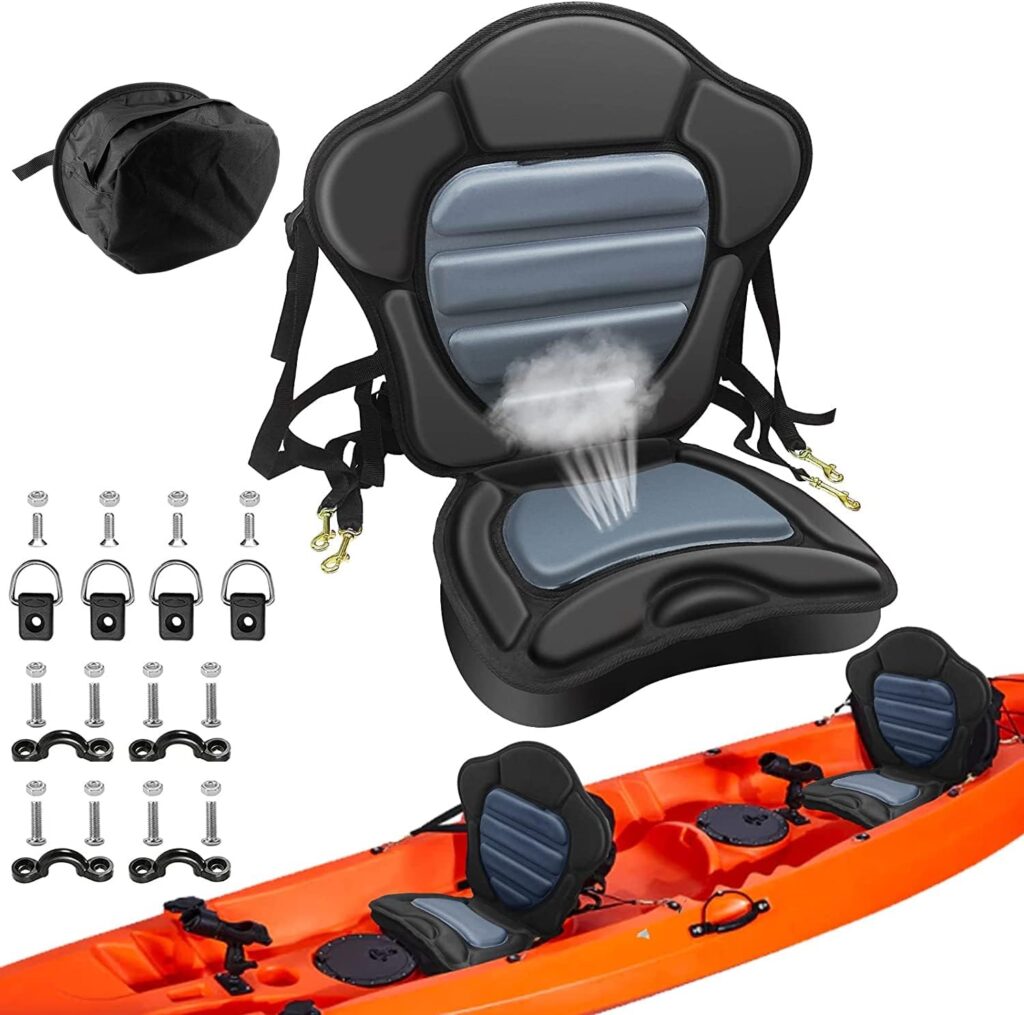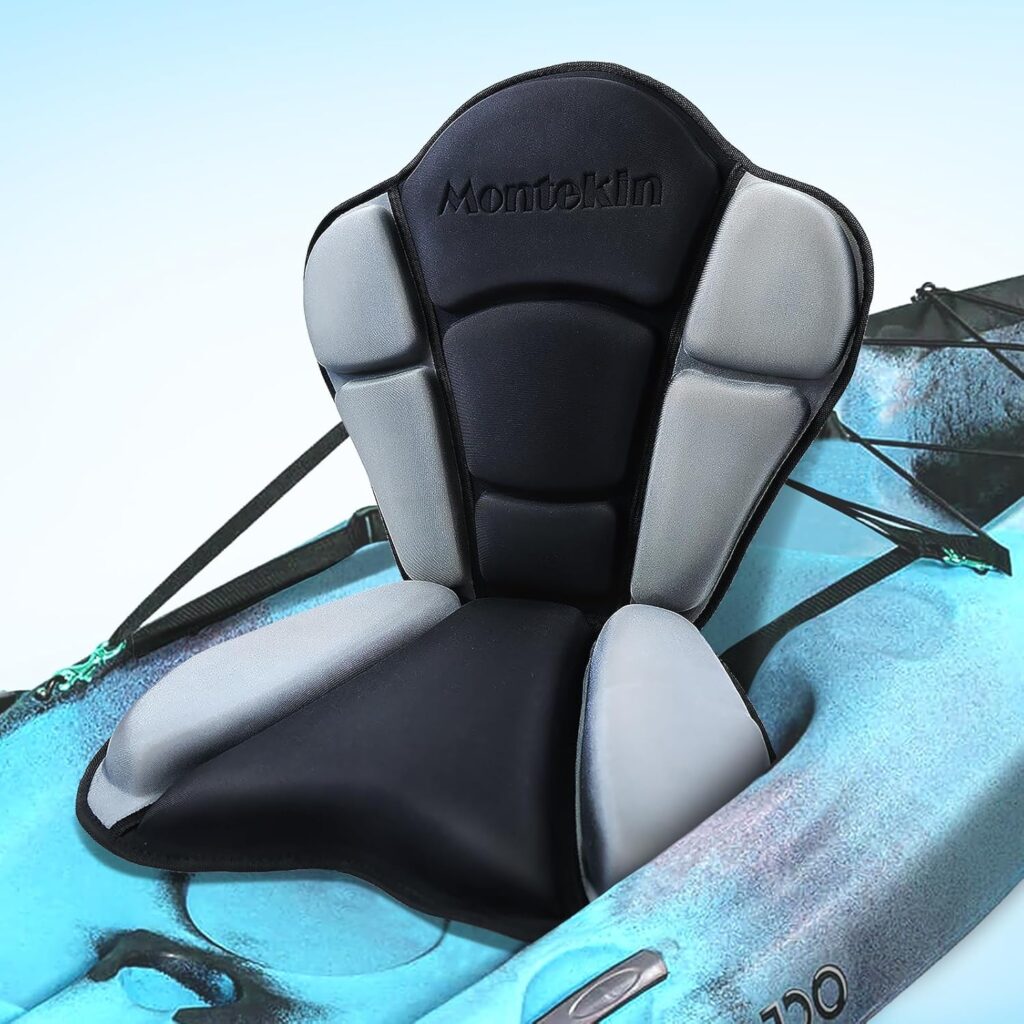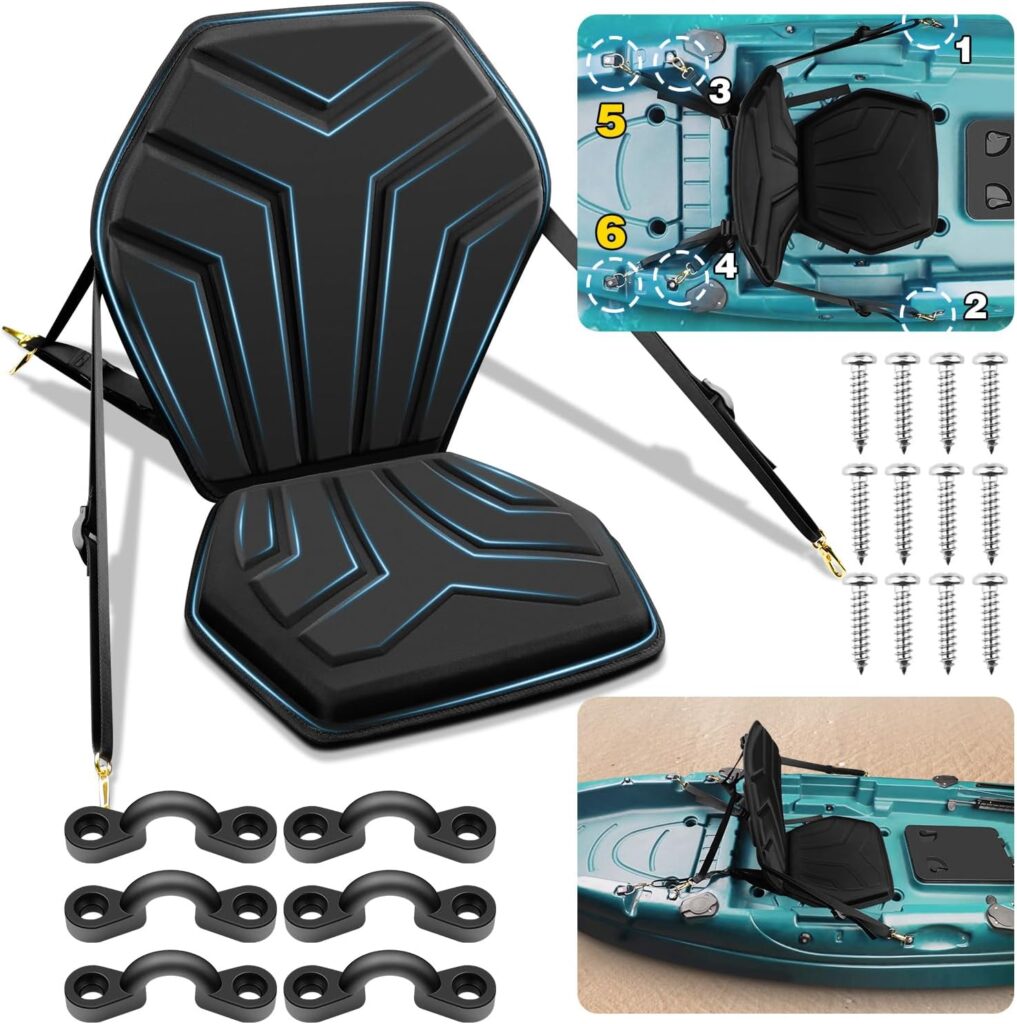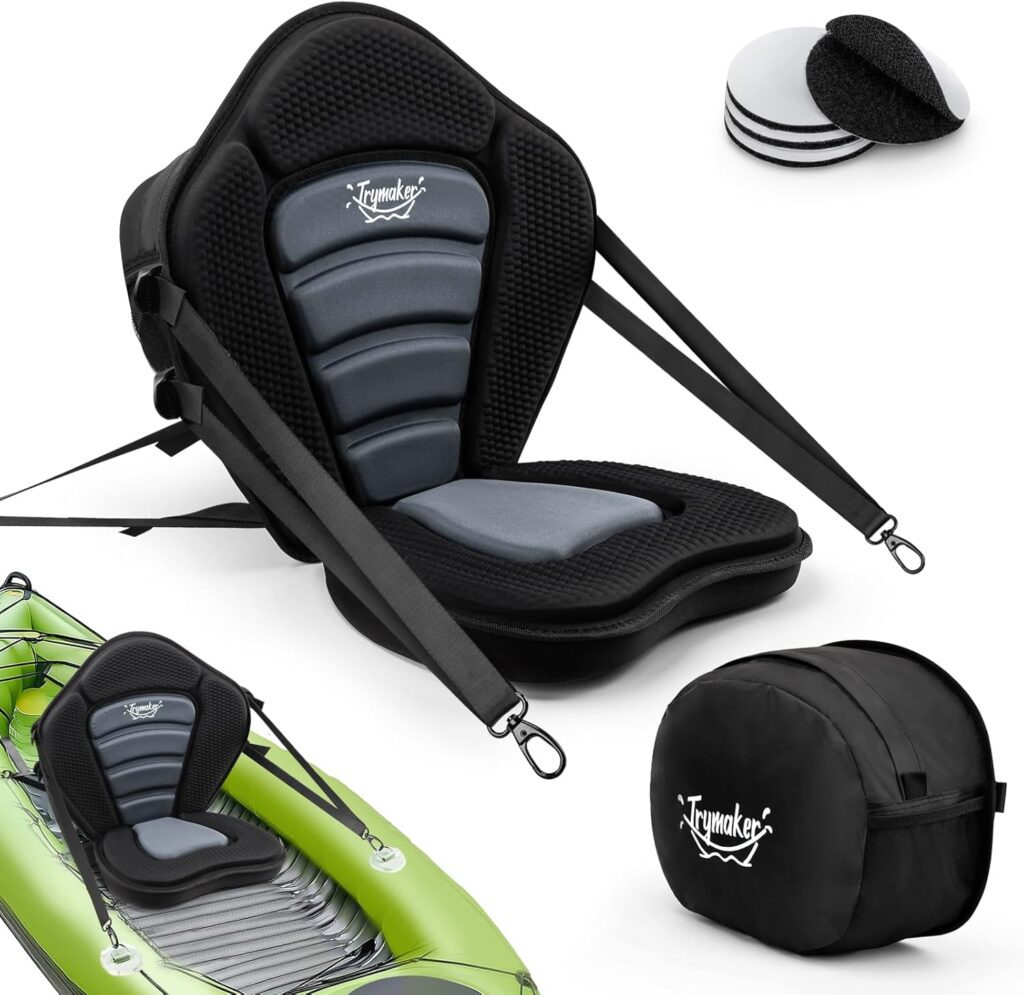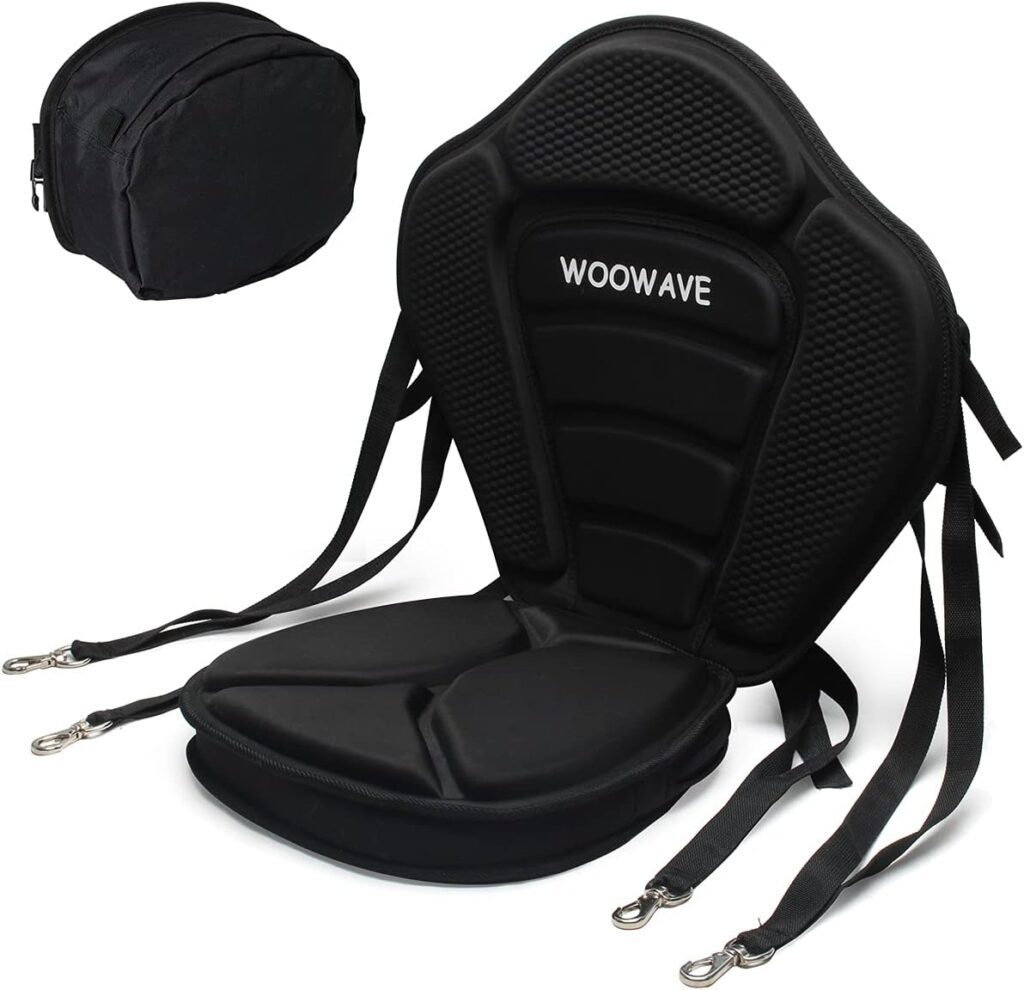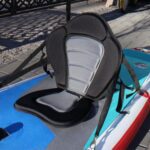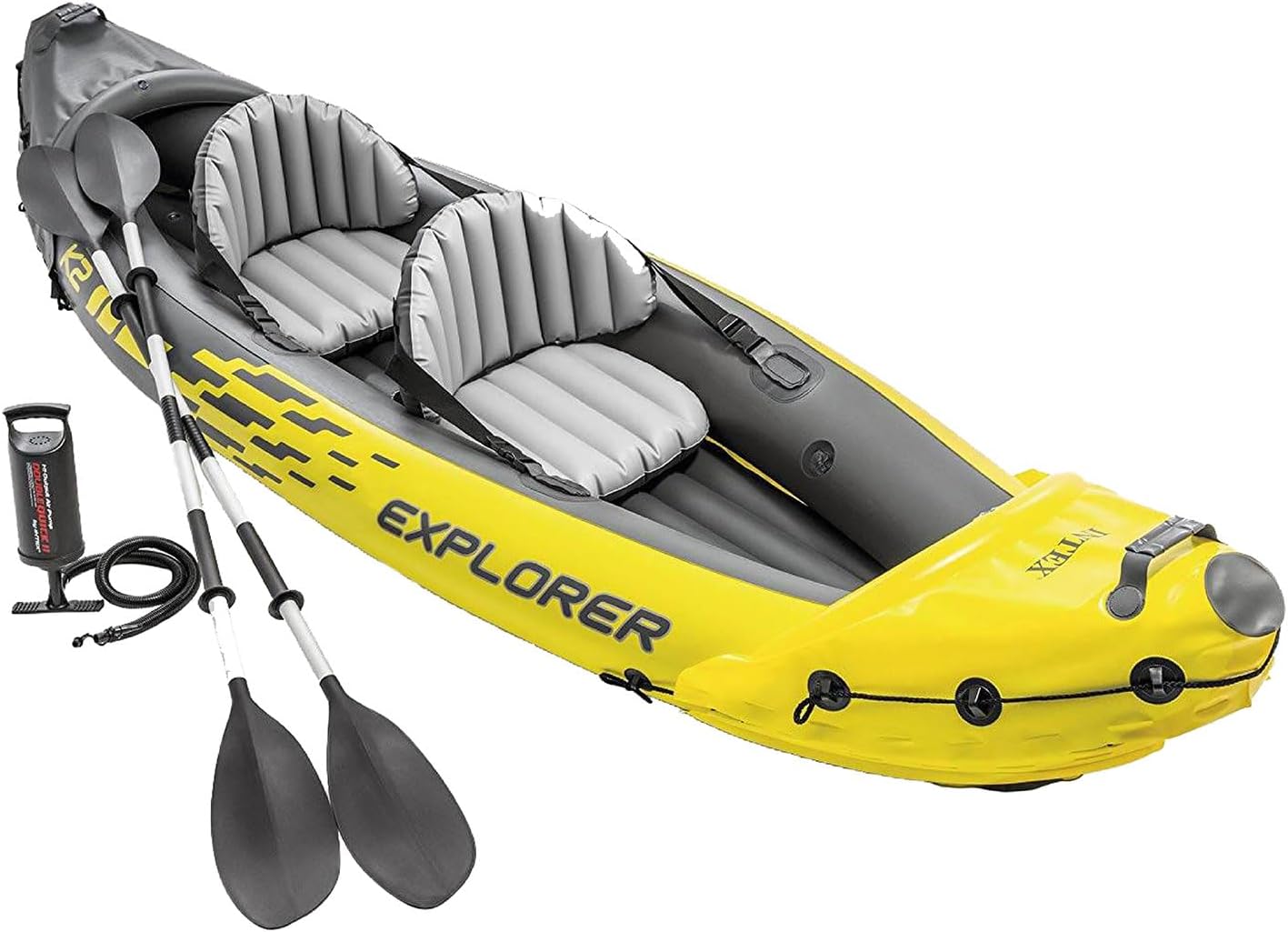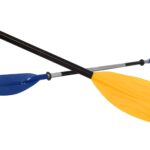10 Best Padded Seats For Kayaks – Your Backside Deserves Better Than A Plank Of Regret
Funny how buying a paddle can feel noble and buying padding feels like admitting you are human, not a superhero. That said, the best padded seats for kayaks are the single most effective upgrade for any paddler who wants longer trips and fewer complaints from their lower back.
What Are The Best Padded Seats For Kayaks Right Now?
For most paddlers the best option is a molded foam seat with built in lumbar support and a low friction cover, supplemented by a thin gel or closed cell pad under the sit bones when needed.
For anglers a high backed, strap-mounted padded kayak chair that offers vertical support and breathability works best. For ultra distance racers and surfski users, a low profile foam pad that preserves hip rotation and uses a slippery top layer is usually superior.
If you want a simple after market cushion the Skwoosh style gel seat or an EVA/gellayer pad gives fast relief and is widely recommended. These choices balance comfort, durability, and the need to maintain paddling posture and rotation.
Best Padded Seats for Kayaks
Finding the best padded seats for kayak can make the difference between a joyful day on the water and an aching back you’ll regret for a week. A good seat doesn’t just offer comfort, it improves posture, keeps you stable, and makes long hours of paddling feel far less punishing.
Below, you’ll find detailed reviews of some of the most reliable padded kayak seats available today, each tested against common concerns like durability, support, ease of adjustment, and storage features.
1. PenBan Universal Deluxe Kayak Seat Cushion with Storage Bag
This seat offers generous padding paired with a practical detachable storage bag, making it ideal for longer trips. Adjustable straps allow for a snug fit on most kayaks and other small watercraft. With its durable build, it balances comfort and reliability at a fair price point.
Pros
- Thick cushioning for comfort on long paddles
- Detachable storage bag adds convenience
- Fits most kayaks, SUPs, and canoes
- Adjustable straps for a secure fit
- Sturdy materials for lasting use
Cons
- Straps may need frequent readjusting
- Storage bag is smaller than expected
2. HLOGREE Kayak Seats with Back Support
Designed with thicker padding than many standard options, this seat emphasizes lumbar support for comfort. Its compatibility with both canoes and SUPs makes it versatile. The set option (1 or 2 pack) appeals to paddling partners or families.
Pros
- Extra-thick padding enhances support
- High back design reduces strain
- Compatible with multiple watercraft types
- Option to purchase in pairs
- Durable straps hold securely
Cons
- Bulky size may not suit all kayak models
- Can get warm in hot weather
3. iTAOSTAR Inflatable SUP Seat with Backrest
This inflatable option provides adjustable firmness, making it unique compared to traditional foam seats. Lightweight and portable, it’s a strong choice for those who prioritize easy storage and transport. It may not feel as rigid as molded seats but still delivers surprising comfort.
Pros
- Inflatable design is lightweight and packable
- Adjustable firmness for custom comfort
- Easy to install and remove
- Works for adults and kids
- Good option for SUP paddlers
Cons
- Less durable than foam or molded seats
- Requires inflation each time
4. RELIANCER Kayak Seat Deluxe with Detachable Storage Bag
This two-seat pack is well-suited for couples or friends who paddle together. Each seat includes a detachable storage bag for small items and provides ample padding for long outings. With four adjustable straps per seat, they adapt to most kayak and SUP models easily.
Pros
- Great value with two seats included
- Detachable storage bag for essentials
- Comfortable high backrest design
- Fits a variety of boats and boards
- Sturdy build for recreational use
Cons
- Bulkier to store two seats at once
- Straps could wear with heavy use
5. JAYEGT Kayak Seat Deluxe Padded Back Canoe Seat
This model combines reliable back support with a universal fit, making it a flexible upgrade. The included storage bag and four adjustable straps add convenience on long trips. Its design balances affordability with comfort, suiting casual paddlers.
Pros
- Comfortable high-back support
- Universal fit for many watercraft
- Storage bag included
- Adjustable straps for secure placement
- Durable stitching for extended use
Cons
- Padding could be thicker for long-distance trips
- Bag zipper may stick occasionally
6. CLIO Kayak Seat Deluxe Padded Fishing Boat Seat
Built for fishing trips and all-day paddles, this seat features a cushioned base with a supportive backrest. A detachable storage bag keeps essentials handy, and adjustable straps ensure proper alignment. The seat works well for sit-on-top kayaks and canoes.
Pros
- Comfortable cushioning for extended use
- Strong back support for better posture
- Includes detachable storage bag
- Universal fit with adjustable straps
- Designed with anglers in mind
Cons
- May feel stiff at first use
- Buckles could be more robust
7. Montekin Thickened Kayak Seat with Back Support
With its molded foam and thick cushioning, this seat is tailored for paddlers seeking comfort on long trips. The high backrest provides stability and helps prevent fatigue during hours of use. Its design is especially suited for fishing and touring kayaks.
Pros
- Molded foam adds ergonomic support
- High backrest for comfort
- Thickened seat cushion for long sessions
- Fits most sit-on-top kayaks and SUPs
- Ideal for fishing or long-distance paddling
Cons
- Heavier than fabric-only seats
- Not the cheapest option
8. HLOGREE 6-Point Attachment Thick Padded Kayak Seat
This model stands out for its 6-point attachment system, giving it extra stability compared to traditional 4-strap seats. The thick padding makes it ideal for long excursions where back support is key. Built for universal fit, it’s a dependable replacement option.
Pros
- Six-strap system for maximum security
- Thick padding enhances comfort
- Provides excellent back support
- Compatible with Hobie and other kayaks
- Durable construction for longevity
Cons
- More complicated to install than 4-strap seats
- Heavier due to extra hardware
9. Trymaker Kayak Seats with Back Support for Sit-on-Top
This versatile seat is designed to fit inflatable paddleboards, sit-on-top kayaks, and canoes with ease. Its cushioned backrest and firm base create a comfortable paddling position. Simple to install, it is a reliable choice for casual use.
Pros
- Fits multiple watercraft styles
- Comfortable padding for day trips
- Easy to attach and adjust
- Lightweight and portable
- Provides good value
Cons
- Not as supportive for multi-hour paddling
- Straps may loosen over time
10. WOOWAVE Kayak Seat Padded Deluxe Paddleboard Seat
Featuring a high backrest and thick cushion, this seat is crafted for both comfort and durability. The adjustable straps allow for a tailored fit, and its design accommodates most kayak and SUP setups. It offers a dependable balance of affordability and function.
Pros
- Thick cushion for extended comfort
- High backrest improves posture
- Fits most kayaks and SUPs
- Adjustable straps for secure fitting
- Affordable and reliable
Cons
- Storage bag not always included
- May feel firm for some paddlers
Why Seat Padding Matters More Than You Think
What you feel after two hours in a kayak is not weakness. It is pressure, nerve compression, and poor posture wearing out tissues.
Pressure concentration on the ischial tuberosities, poor lumbar support, and friction that prevents natural pelvic rotation cause numbness, tailbone pain, and fatigue.
A well designed padded seat spreads pressure, supports the lumbar curve, and lets your hips rotate for efficient strokes and less muscle strain. Studies and paddling guides emphasize posture and seat geometry as key contributors to comfort on long trips.
Types of padding and when to use each
1. Closed Cell Foam (EVA, Minicell)
Pros: does not absorb water, dries fast, holds shape, resists rot.
Cons: can be firm and reduce hip rotation if too thick.
Best for sit in kayaks and as a base layer for touring. Many manufacturers use closed cell foam for long lasting kayak seats.
2. Molded High Density Foam
Pros: shaped support, integrated hip braces and lumbar contours, comfortable for long days.
Cons: heavier and often a fixed profile so fit matters.
Found in many factory and aftermarket seats that aim to combine support and positioning.
3. Gel Inserts And Gel Pads
Pros: excellent pressure relief under sit bones, pleasant initial feel.
Cons: can trap heat and sweat, some gels may not handle long UV exposure as well. Use a thin gel layer on top of foam for pressure relief on long days.
4. Memory Foam Or Open Cell Foam
Pros: molds to the body.
Cons: many memory foams soak water and lose properties. Outdoor specific foam that resists water can work but check specs.
5. Air and inflatable pads
Pros: adjustable firmness and very light.
Cons: puncture risk and can shift if not secured. Best as a temporary or travel option.
6. Low Friction Top Materials
A detail often missed by buyers is the surface that sits between your shorts and the foam. For long paddles a thin low friction layer keeps your sit bones rotating. Forum paddlers often cover foam with a Teflon style pad or use low friction covers for ultra distance racing.
Choosing The Best Padded Seats for Kayaks by Use Case: Match Padding To Your Paddling
1. Recreational Day Paddling
A padded kayak seat with moderate foam, breathable cover, and basic lumbar support will do. Look for strap mounting that keeps the seat from sliding.
2. Fishing and Angling
For anglers the best padded seats for kayaks are high back, adjustable, and durable. They must allow casting, have good kayak back support and resist water and grime.
These seats often convert a kayak into a stable platform for standing. If you are looking for the best fishing kayak, remember the seat and deck layout determine how well you fish from it.
3. Long Distance Touring / Multi Day Trips
Prioritize pressure distribution and lumbar alignment. Combine a shaped foam seat with a thin gel sit bone pad and a low friction top. Note the phrase how to pad kayak seat for ultra distance racing if you plan multihour events. Racing paddlers often use very low pads and protect hip rotation.
4. Sit-On-Top Casual Use And Beach Launches
Padded seats for kayaks used at the beach should be water resistant, quick drying, and easy to remove. A strap on cushion or a mesh back chair works well when you need to get in and out a lot.
5. Performance and Surfskis
Keep padding minimal. Preserve hip contact and rotation. Surfski paddlers often glue or tape a thin closed cell pad and add a slick cover.
Fit, Compatibility, And Installations That Actually Work
A top complaint when people look for padded seats for kayaks is “it does not fit my cockpit” or “it makes paddling awkward.” Here is how to avoid that.
- Measure hip width at the widest sit bone area. Compare with the internal cockpit width or the aftermarket seat base.
- Check mounting options. Strap on pads are universal but shift more. Seat frames bolt onto deck hardware. Look for seat mounts that match your kayak seat track or d-rings.
- Sit in the boat before you buy when possible. Some retailers encourage trying seats for back support and cushion feel.
- Decide on profile. If you lean forward to paddle a touring kayak or a surfski, avoid thick wedges that push your hips back and restrict leg drive. If you fish, a higher postural seat can help.
If you are replacing factory parts, check kayak seats replacement options from trusted makers or consider a full kayak chair style upgrade that bolts to rails for anglers.
Lumbar And Posture: The Hidden Comfort Factor
Lower back pain is the reason many paddlers look for padded seats for kayaks. Lumbar support matters because the spine needs a small amount of lordotic curve to keep muscles from overworking.
Seats that provide adjustable lumbar support allow you to maintain this curve while still rotating at the hips. Guides and expert advice stress evaluating where the seat hits your back and whether adjustment is possible.
If you have recurring back issues, consult a physiotherapist about seat angle and the amount of lumbar support you should use.
Seat Problems And Practical Fixes
Problem: Numbness In Legs Or Buttocks
Cause: pressure on sit bones and restricted blood flow.
Fix: raise seat slightly, add a gel sit bone pad, and ensure pelvic rotation with a low friction top layer. Many paddlers place thin Teflon style pads over foam during ultra distance racing to preserve rotation.
Problem: Seat Shifts When Wet
Cause: slick surfaces and poor strap routing.
Fix: use non slip bottom pads, route straps through secure points, and add a thin adhesive closed cell pad if needed. Self adhesive pads are common solutions.
Problem: foam smells or degrades
Cause: trapped moisture and poor material choice.
Fix: choose closed cell foam or molded foam designed for marine use and dry thoroughly after trips. Avoid open cell memory foam unless it is explicitly marine grade.
Problem: Seat Reduces Hip Rotation
Cause: thick, sticky foam that glues you in place.
Fix: switch to a lower pad profile, add a low friction cover, or use gel only under the sit bones while keeping the seat base thin. Experienced paddlers report better results by combining thin foam for shape and slippery cover for rotation.
Maintenance And Longevity: How To Look After Padded Seats For Kayaks
A good seat should last years. Follow these rules.
- Rinse with fresh water after salt water exposure.
- Dry thoroughly out of direct sunlight to limit UV breakdown.
- Check straps and buckles for UV cracking.
- For glued in pads follow the manufacturer glue recommendations and allow full cure times.
- Replace when foam loses resilience or gel pockets bulge. Many paddlers replace seat pads on a schedule if they paddle daily.
Upgrades and DIY: When To Modify And How To Avoid Mistakes
People often ask how to pad kayak seat for ultra distance racing or how to do a sit in kayak seat upgrade. Here is practical advice.
How To Pad Kayak Seat For Ultra Distance Racing
- Use a thin, dense closed cell pad directly on the hull for base support.
- Add a thin gel or pressure relieving pad only under the sit bones.
- Cover the foam with a low friction material that allows butt rotation and prevents chafing. Many racers use narrow strips of Teflon or fabric designed for low friction. Test on short sessions before race day.
Sit in Kayak Seat Upgrade
If you want a more supportive seat, look for molded contours that match your hips. Glue in or bolt in seats from reputable makers. Keep in mind cockpit fit and escape considerations. Trial fit before final installation.
Simple DIY Cushion
Use a ThermaRest closed cell pad or an EVA yoga mat cut to shape and adhere with marine contact cement to the hull. This is inexpensive and dries quickly. Paddlers often prefer this cheap fix for older boats.
Features to Look for in the Best Padded Seats for Kayak
Here are types and example products to help focus buying decisions. These picks reflect common top performers.
- Best overall concept: molded foam seat with adjustable lumbar and removable gel sit pad. This combination gives support and pressure relief.
- Best simple cushion: a gel plus EVA pad similar to the Skwoosh Paddling Cushion. It floats, stays put, and reduces pressure quickly.
- Best fishing chair style: a high backed, strap mounted kayak chair built for anglers. These convert sit on top kayaks into proper fishing platforms.
- Best budget fix: closed cell foam pad or glued Happy Bottom style pad. Economical and durable.
FAQs on The Best Padded Seats for Kayaks
Will Extra Padding Make My Kayak Unstable?
No, small increases in seat thickness do not usually change stability. Large boosters can raise your center of gravity and change the feel. If you plan to stand, test stability after the upgrade.
Can Gel Pads Cause Sweating?
Gel can trap heat unless paired with breathable covers or used only under the sit bones. For long days, consider a gel layer plus breathable seat back.
How Long Will A Seat Last?
Depends on material and exposure. Closed cell foam and molded EPE foam often last several seasons. Replace when resilience or shape is lost.
Is It Safe To Glue A Seat In?
Yes, if you use marine grade adhesives and follow curing instructions. Test fit before final gluing.
Can I Use A Kayak Seat Upgrade On A Boat I Also Fish From?
Absolutely. For anglers, the best padded seats for kayaks combine high back support with a firm base so you can pivot, cast, and land fish while staying comfortable. When choosing a setup, remember that accessories like a fish finder for kayak will add weight and change how you pack the cockpit.
The Bottom Line on The Best Padded Seats for Kayaks
When you strip away the marketing talk and paddling myths, the truth is simple: comfort on the water is not a luxury, it is a prerequisite for enjoying the sport. The best padded seats for kayaks are the ones that match your body, your style of paddling, and the trips you plan to take.
If you are an angler, choose a high-back seat with durable straps and breathable padding so you can cast for hours. If you are a distance paddler, keep the padding low profile, add lumbar support, and protect hip rotation with a slick cover. For casual beach or weekend use, a strap-on cushion or quick-dry gel pad is often all you need.
Whatever your choice, think beyond price and look at fit, durability, and posture support. A good seat turns a kayak into a place you want to stay, not escape from and that is the real sign you picked wisely.
